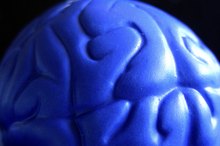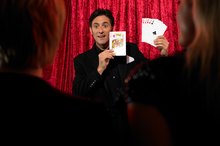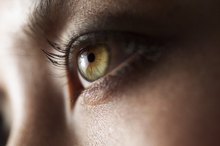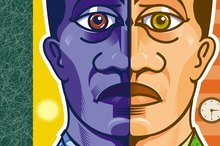What does fact checked mean?
At Healthfully, we strive to deliver objective content that is accurate and up-to-date. Our team periodically reviews articles in order to ensure content quality. The sources cited below consist of evidence from peer-reviewed journals, prominent medical organizations, academic associations, and government data.
The information contained on this site is for informational purposes only, and should not be used as a substitute for the advice of a professional health care provider. Please check with the appropriate physician regarding health questions and concerns. Although we strive to deliver accurate and up-to-date information, no guarantee to that effect is made.
Barriers to Nonverbal Communication
Nonverbal communication is universal to the human species. Research by Dr. Albert Mehrabian suggests that approximately 55 percent of human communication is nonverbal, according to the College of DuPage website. Barriers to nonverbal communication can occur for several reasons, ranging from deliberate deception to cultural differences and problems in mental functioning.
Developmental Disorders and Brain Dysfunction
Autism first appears in very young children and persists into adulthood, according to the Yale School of Medicine 4. Autistic children and adults often display unusual nonverbal communication gestures. They also frequently lack the ability to read social or nonverbal cues from other people, according to the Helpguide and the Mayo Clinic websites.
Individuals who fall along the autism spectrum vary in the impairment of their abilities to communicate. Approximately 50 percent of autistic individuals lack the ability to speak, according to the Yale School of Medicine 4. However, individuals with Asperger's Syndrome often have normal or even high intelligence, along with good verbal skills. Nonetheless, they often give the impression of being eccentric or socially inept, according to Helpguide.
Aphasia, or the loss of ability to communicate, often occurs with brain tumors, stroke or brain damage resulting from traumatic head injuries, according to the Mayo Clinic. Aphasia affects the ability to understand verbal and written language. The severity of aphasia depends on the extent and location of brain damage.
- Autism first appears in very young children and persists into adulthood, according to the Yale School of Medicine 4.
- They also frequently lack the ability to read social or nonverbal cues from other people, according to the Helpguide and the Mayo Clinic websites.
Cultural Barriers
Nonverbal Communication Facts
Learn More
Cultural differences can also cause barriers in nonverbal communication. Different gestures often have vastly different meanings to people of different cultures. For instance, waving the hand vertically with the palm facing outward means "goodbye" in the United States, but can be misinterpreted as meaning "come here" to someone from Korea, according to the Korea Times. Asian cultures also often differ from Western cultures concerning eye contact.
Many Americans value direct eye contact as a sign of honesty. However, lowering your eyes is seen as a sign of respect among many Asian cultures, the Ethnicity Online website explains. Many Latin Americans and African Americans also avoid eye contact when they are being "dressed down" as a sign of showing remorse, rather than as an attempt at evasiveness, according to Joe Navarro, author of "What Every Body is Saying," writing for Psychology Today 3.
The need for personal space also varies across cultures, according to Ethnicity Online. Many immigrant men feel uncomfortable sitting in close physical proximity with other males, according to Gregorio Billikopf, author of "Party-Directed Mediation: Helping Others Resolve Differences," writing for the Agricultural Labor Management of the University of California at Berkeley. It is important to avoid making culturally-based generalizations, Billikopf warns.
- Cultural differences can also cause barriers in nonverbal communication.
- Many Latin Americans and African Americans also avoid eye contact when they are being "dressed down" as a sign of showing remorse, rather than as an attempt at evasiveness, according to Joe Navarro, author of "What Every Body is Saying," writing for Psychology Today 3.
Deceptive Gestures
Although nonverbal gestures often give away the truth when someone attempts to lie, spotting a liar can be very difficult, according to Navarro. Nonverbal gestures considered in isolation can lead to misinterpretation. For instance, many observers interpret hand wringing as a dead giveaway of lying, when in fact it is often an indication of nervousness rather than deception. One way to accurately determine deception is to inquire about a variety of subjects in a non-accusing tone, while watching the respondent's reactions, Navarro explains.
- Although nonverbal gestures often give away the truth when someone attempts to lie, spotting a liar can be very difficult, according to Navarro.
Related Articles
References
- Psychology Today: Some Things You Just Can't HIde
- Korea Times: Lessons in Intercultural Communication
- Psychology Today: Body Language Myths
- Yale School of Medicine: Autism
- Autism Speaks. Autism Facts and Figures.
- Bishop SL, Farmer C, Thurm A. Measurement of nonverbal IQ in autism spectrum disorder: scores in young adulthood compared to early childhood. J Autism Dev Disord. 2015;45(4):966-74. doi:10.1007/s10803-014-2250-3
- National Institute on Deafness and Other Communication Disorders. NIH Workshop on Nonverbal School-Aged Children with Autism. Updated July 21, 2015.
- Centers for Disease Control and Prevention. Treatment for Autism Spectrum Disorder. Updated August 26, 2019.
- Solomon R, Van Egeren LA, Mahoney G, Quon Huber MS, Zimmerman P. PLAY Project Home Consultation Intervention Program for Young Children With Autism Spectrum Disorders: A Randomized Controlled Trial. J Dev Behav Pediatr. 2014;35(8):475-85. doi:10.1097/DBP.0000000000000096
- Sharda M, Tuerk C, Chowdhury R, et al. Music improves social communication and auditory-motor connectivity in children with autism. Transl Psychiatry. 2018;8(1):231. doi:10.1038/s41398-018-0287-3
- Rudacil, Deborah. IQ scores not a good measure of function in autism. Spectrum News, 6 January 2011.
- Berdick, Chris. Cracking the code of silence in children with autism who barely speak. Boston University website. July 2015.
- Bardikoff, N. et al. Testing nonverbal IQ in children with Autism Spectrum Disorders.Research in Autism Spectrum Disorders. Volume 8, Issue 9, September 2014, Pages 1200–1207
- National Institute on Deafness and Other Communication Disorders. NIH Workshop on Nonverbal School-Aged Children with Autism. April 2010.
Resources
Writer Bio
Chris Blank is an independent writer and research consultant with more than 20 years' experience. Blank specializes in social policy analysis, current events, popular culture and travel. His work has appeared both online and in print publications. He holds a Master of Arts in sociology and a Juris Doctor.








